In October 2008, I visited the Peruvian Amazon again, exploring
dwarf cichlid habitats and collecting fish
( among other things ).
This time I had the pleasure of having Mike Wise accompanying me.
From the jungle capital Iquitos, we carried out several expeditions to examine
different biotopes, fish
and their habitats.
On one of these expeditions we went to Pebas, east of Iquitos.
Our trip to Pebas this time, was motivated by the rumors of a fish the local people called
Apistogramma "Negra", and photos of an Apistogramma, with A. sp. "Pebas"-colors, and strange
formed split bars (reminding of Apistogramma cf. eunotus) which we had seen.
In Iquitos, Peru
In October 2008, I was in Iquitos, Peru, again.
This map shows where it's located, in the Peruvian Amazon:
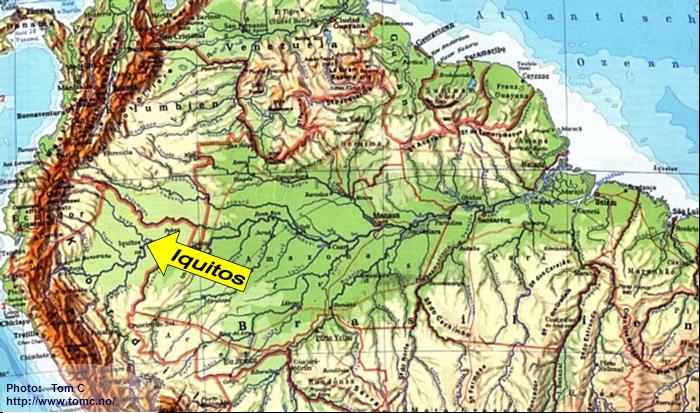
A closer look at the eastern surroundings of Iquitos:
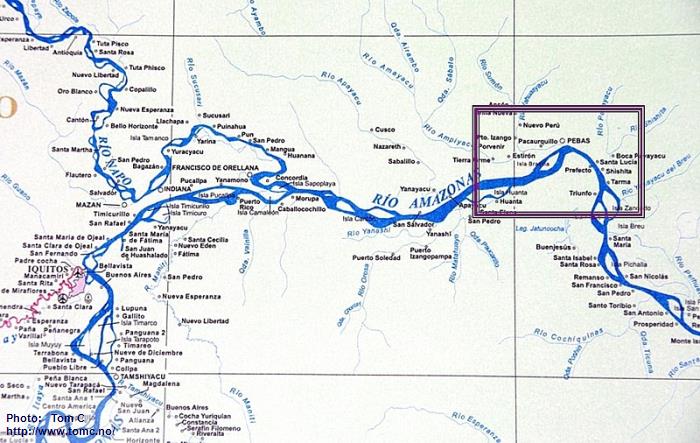
In order to save a lot of time (but not money!), we this time booked seats in a "Rapido"
(a small, very fast boat) from Iquitos to Pebas.
In Pebas
After only 4 hours after leaving Iquitos, we reached the Río Ampíyacu,
which enters the Amazon river at the town of Pebas.
Río Ampíyacu, and the town of Pebas at the right:
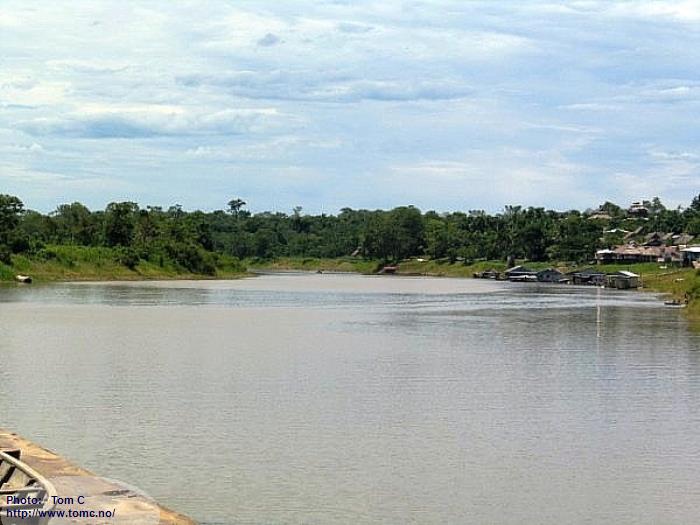
The tower-house is the atelier and house of the famous painter Francisco Grippa:
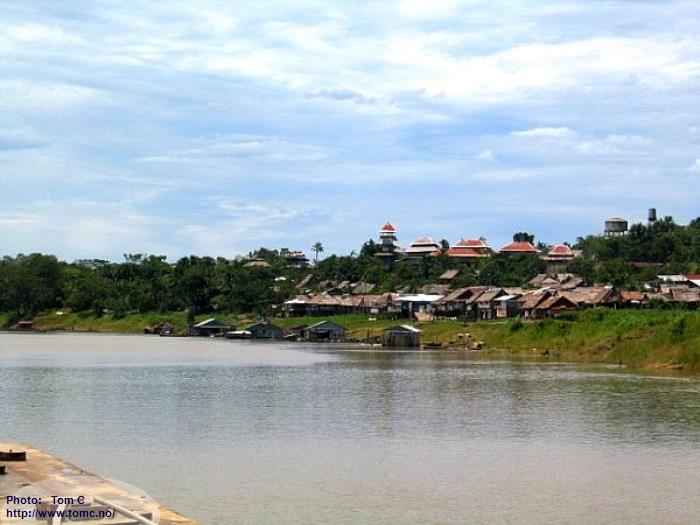
We installed ourselves in the only hotel in Pebas:
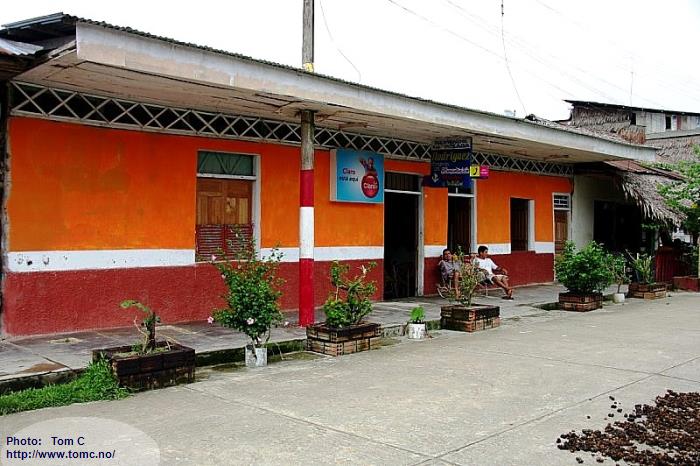
It had been painted outside since my last visit in 2006.
At that time the same hotel looked like this:
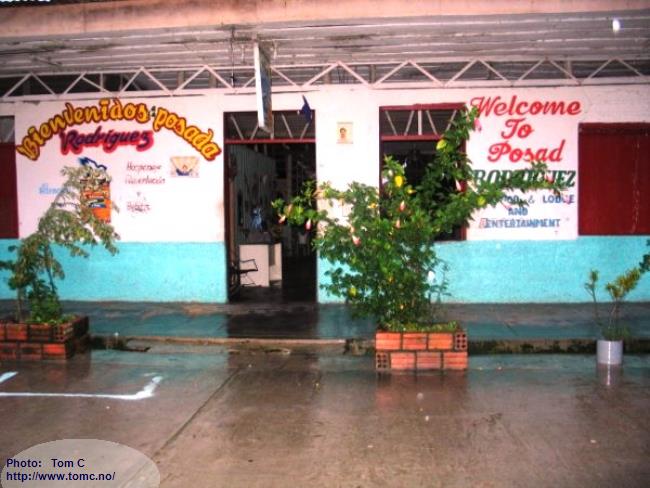
The rooms are very luxurious :-)
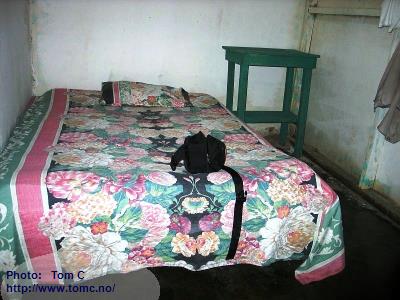
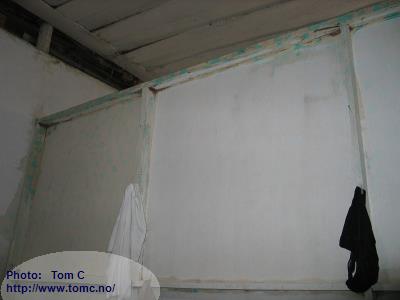
We immediately left this overwhelming luxury, and went out of the town.
We crossed some fields with water buffaloes, and looked at this:
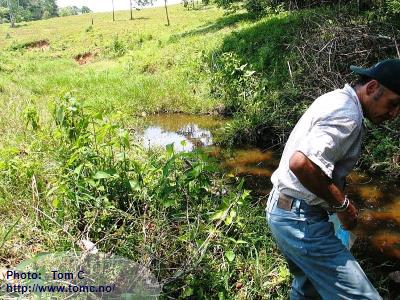
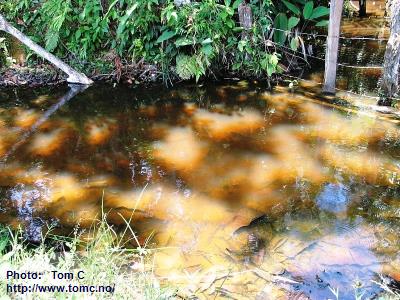
We tried the net, and .........
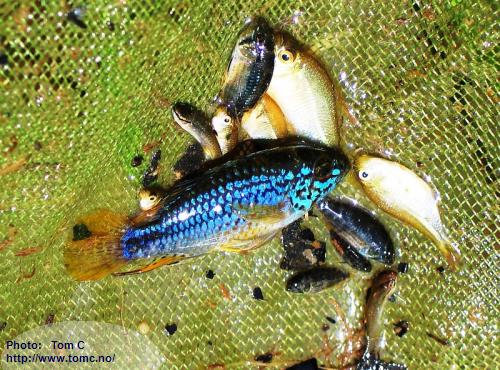 Apistogramma sp. "Pebas" (Morado)
Apistogramma sp. "Pebas" (Morado)
was shining in blue colors
in the net. What a catch!
The water:
pH: 5,91
Conductivity: 30 µSiemens/cm
T: 32,5 °C
(at the end of the dry season)
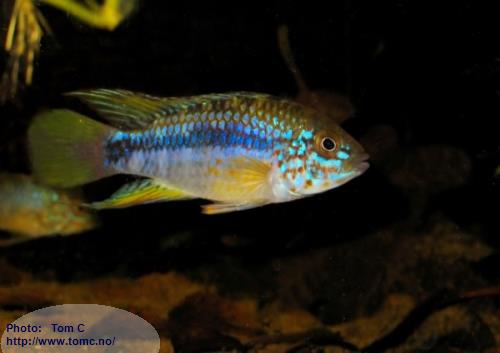
This is fish I collected in the same
waters in 2006.
Not at all showing the same amounts
of blue colors........
On our way back to Pebas, we collected some nice, blue tetras in this
amazingly shallow, small stream.
Unfortunately I have no good photos of them.
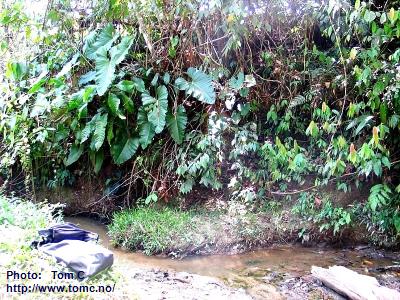
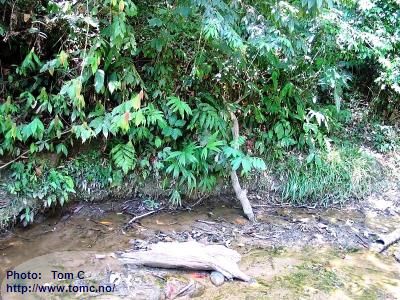
Back at the hotel, we were served dinner.
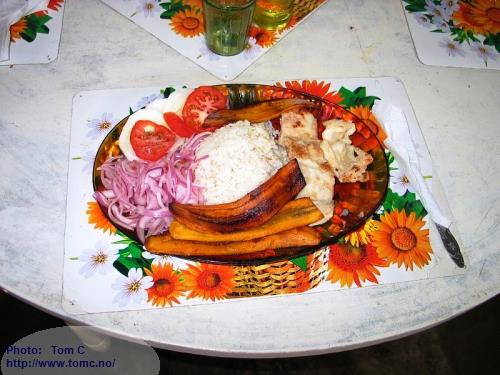
The owner of the hotel said we
would have "Paiche" (
Arapaima gigas),
but it looked and tasted like
Black Caiman. ;-)
As usual served with fried bananas,
rice and vegetables.
We were planning an expedition to start the next morning, so we had some time to spend this afternoon.
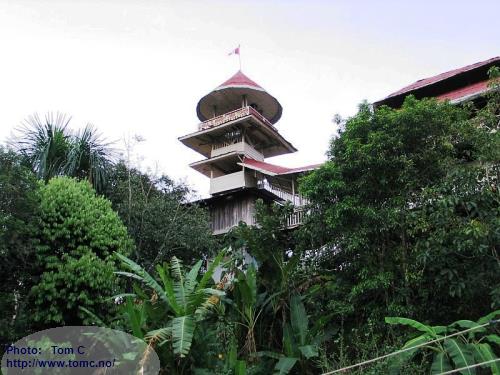
We went to the tower-house of the famous
painter Francisco Grippa:
The people there allowed us to enter the tower:
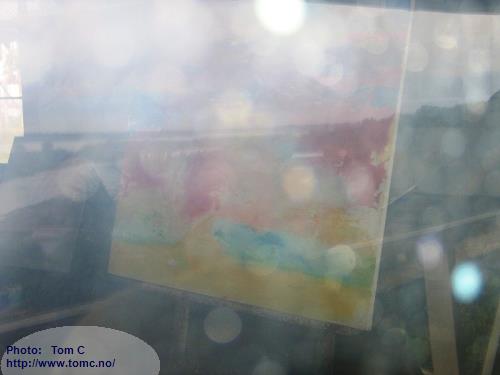
Through the windows I could see some
of his paintings:
From the top of the tower, we could watch the Río Ampíyacu entering the huge Río Amazonas:
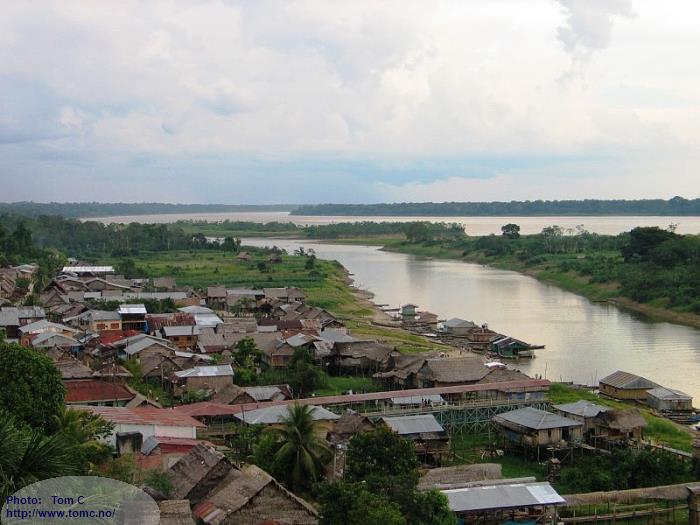
More photos taken from the tower:
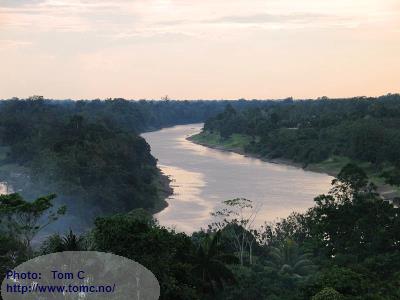
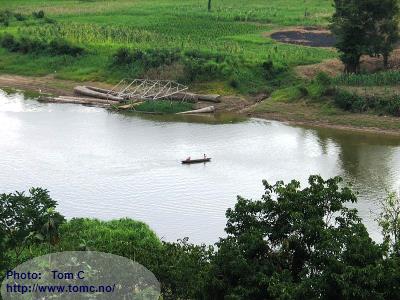
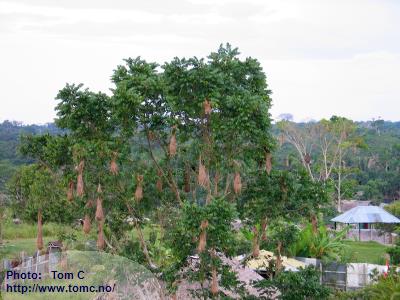
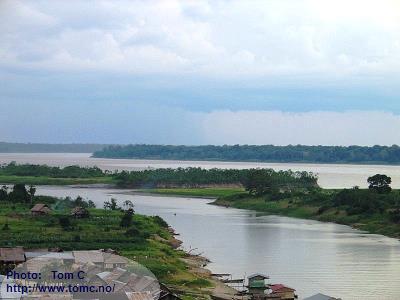
The artist himself was not at home, but amazingly the people looking after his house,
allowed us to enter inside the house.
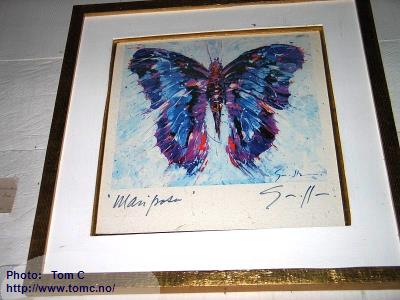
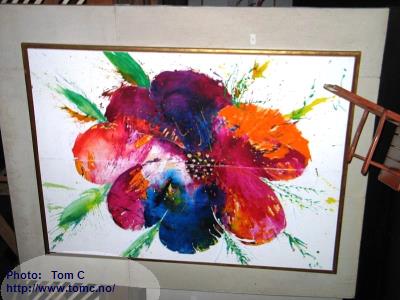
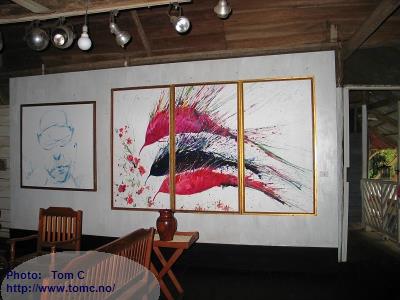
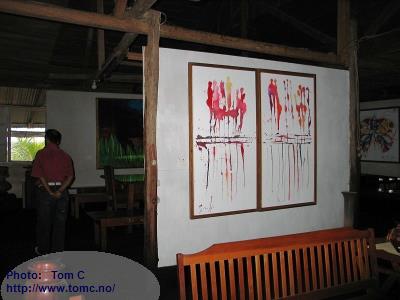
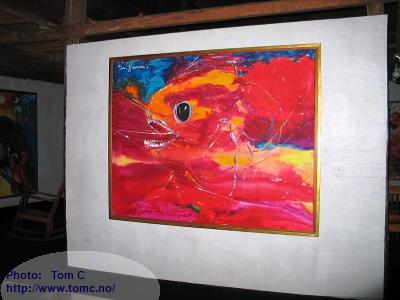
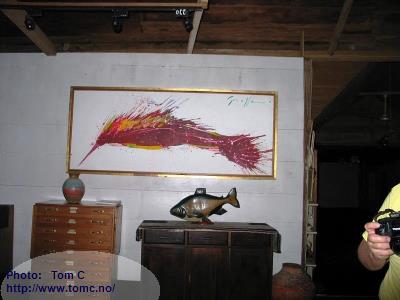
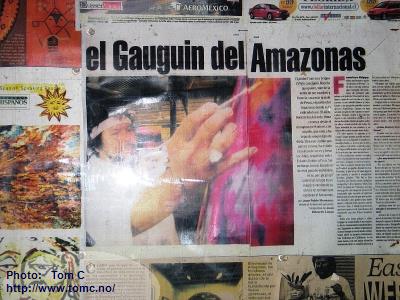
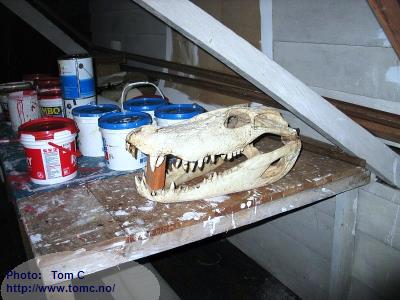
We didn't stay up late, as we were going on an expedition quite early the next morning.
Apistogramma "Negra" in the Río Orosa
We (our fisherman) knew that a fish called "Apistogramma Negra" were living in the Río Orosa drainage,
not so far from the town Huanta, at the mouth of Río Orosa.
We just "had to" collect this fish, to see what it was like.
We would have to cross over the Río Amazonas, and enter the jungle
somewhere upstream the town of Huanta.
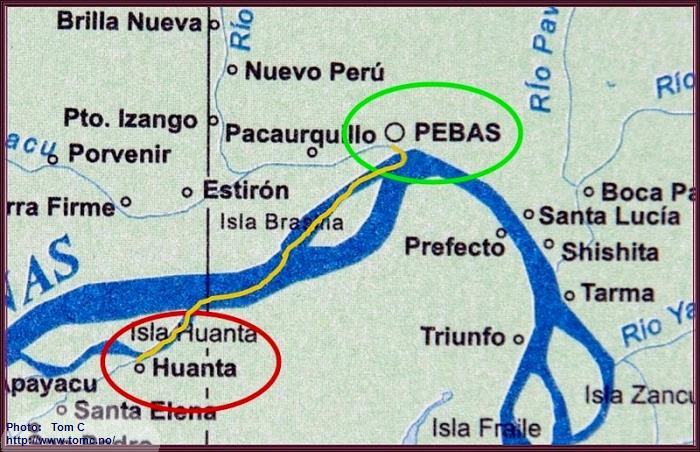
We hired a local fisherman with a "pequi-pequi" (small boat with a small outboard engine) to take us there.
Next morning we were up at 06:00, had breakfast, and at 07:00: off we went.
The driver and owner of the boat
Crossing the Río Amazonas
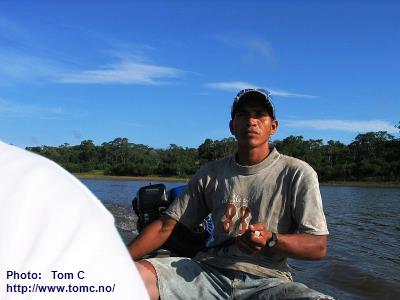
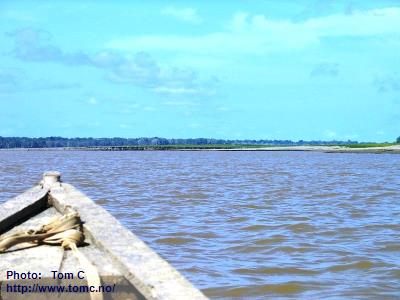
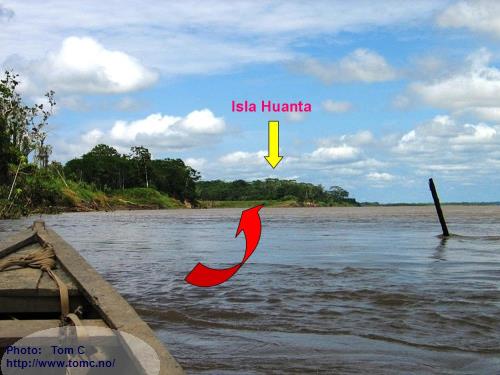
After three hours we could
see the Isla Huanta.
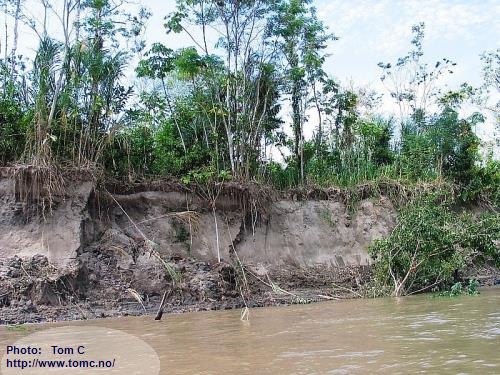
The erosion is constantly
breaking down the banks
of Río Amazonas:
Getting closer:
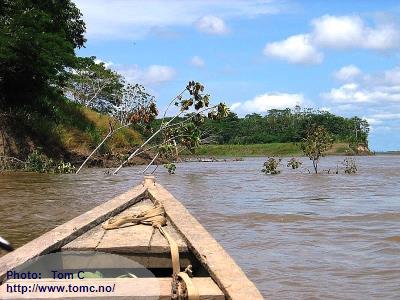
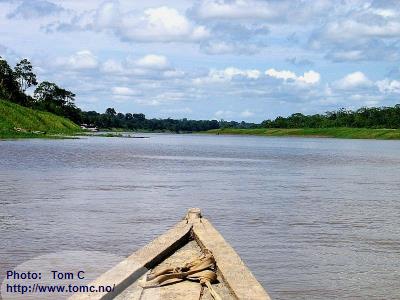
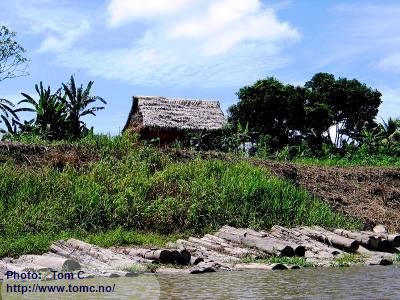
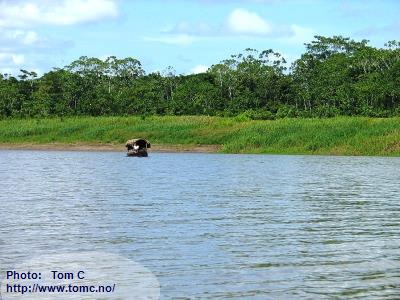
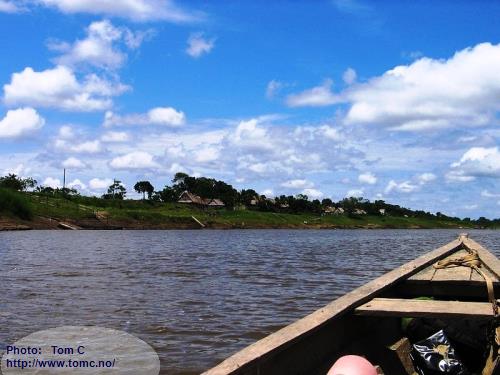
We passed the small town
of Huanta.
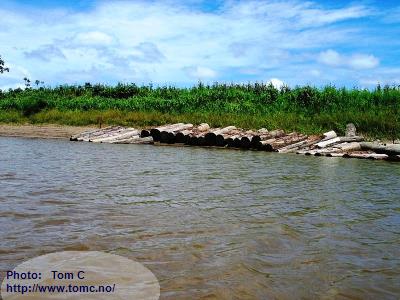
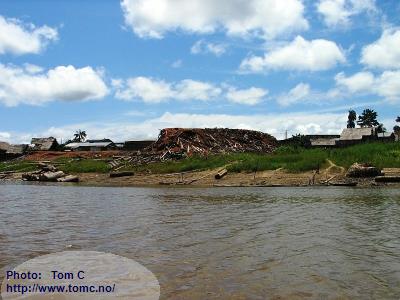
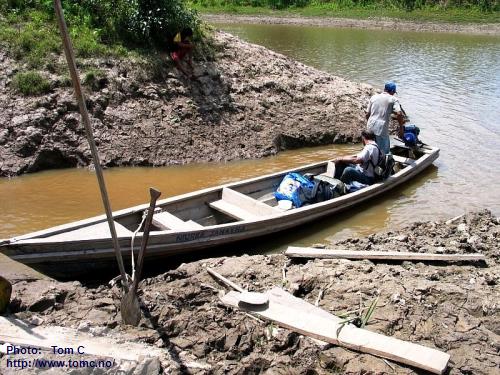
After a while we found a place where we could leave our boat, found a boy who could look after it.....
and walked into the very hot and very humid jungle:
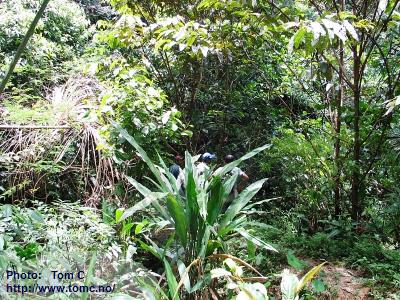
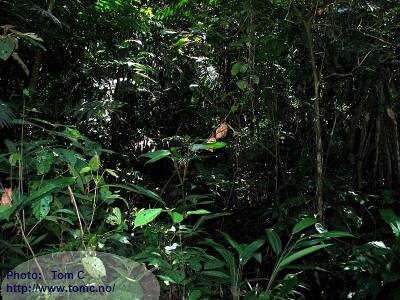
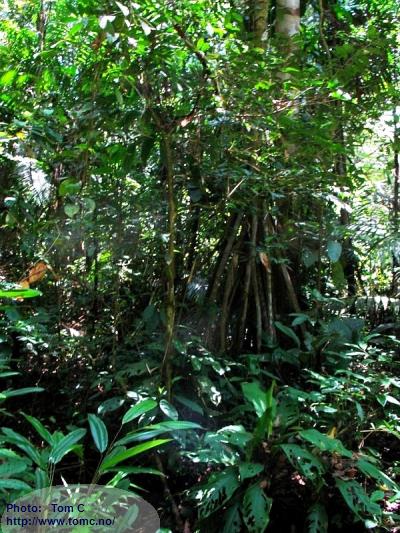
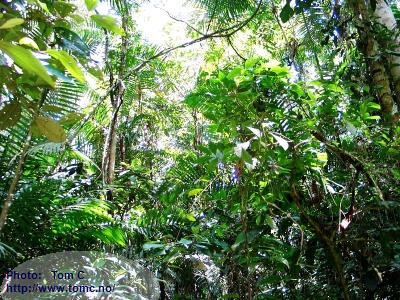
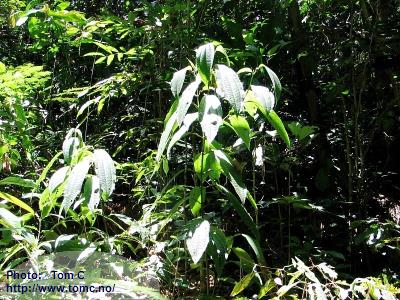
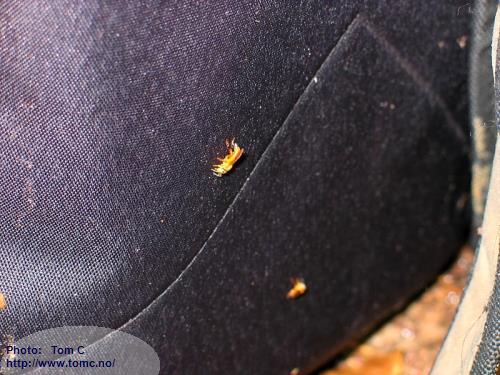
with the bugs:
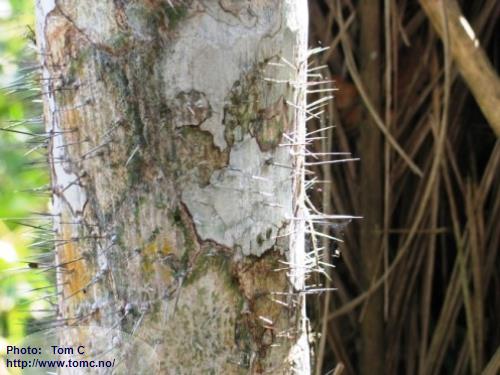
with the trees you wouldn't
like to lean on:
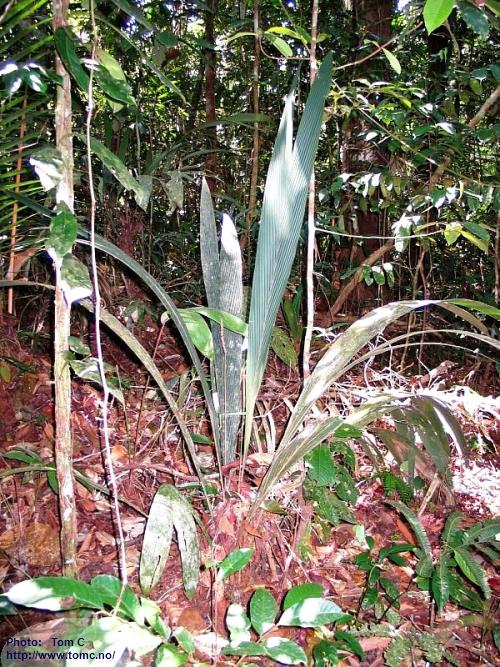
with the young palms:
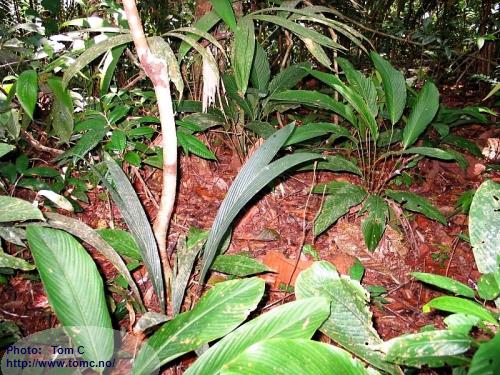
and with the vet ground covered
with humid, dead, leaves:
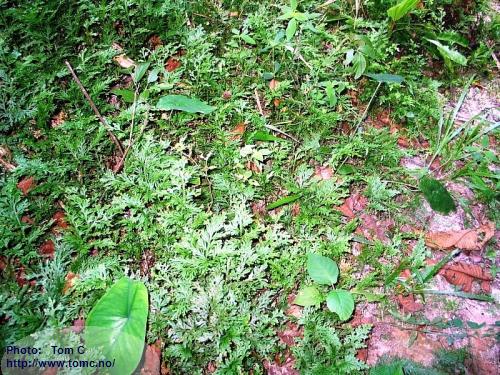
These ferns are usually seen where the
ground and water are quite acid.
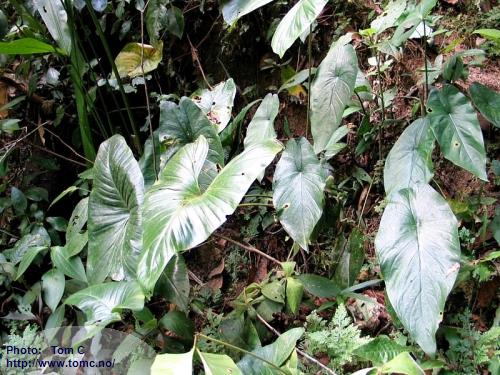
The
Philodendron spp. we often keep
as house plants, live here.
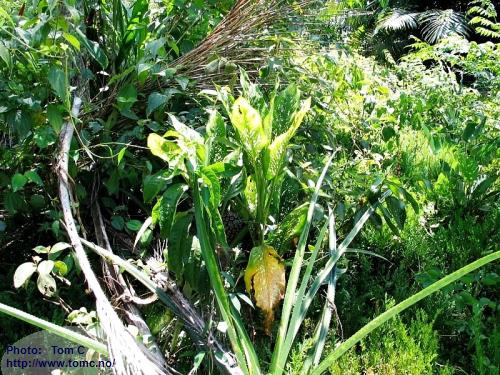
The same is the case with this
Dieffenbachia sp.
We found several small streams where we tried the nets, without very interesting results....
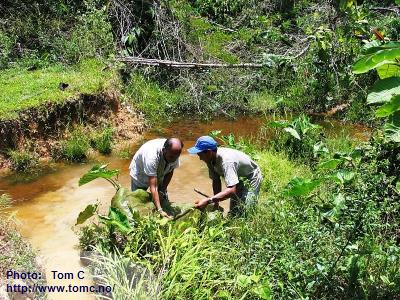
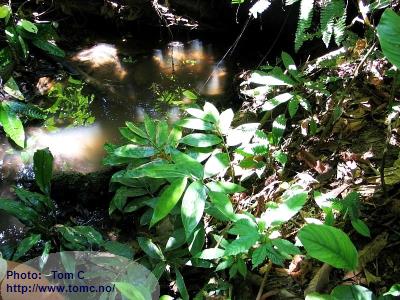
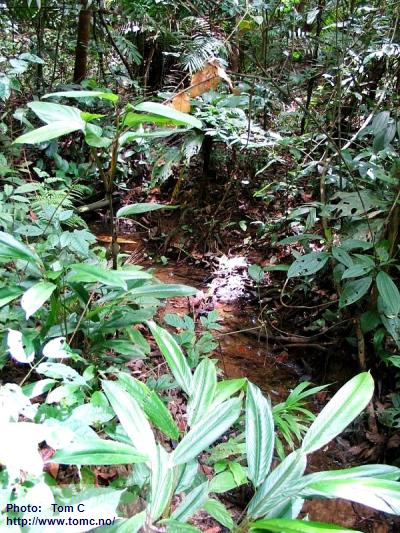
until we came to this:
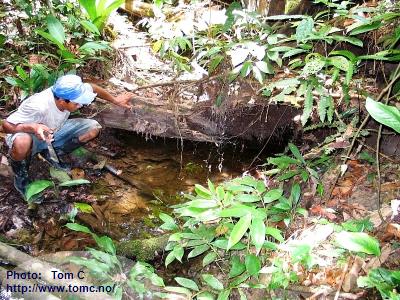
and we got these in the net:

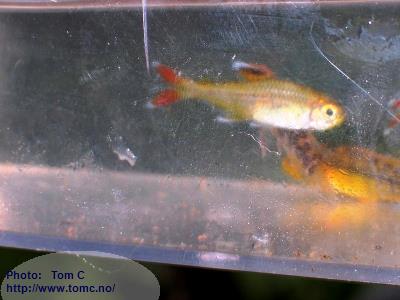
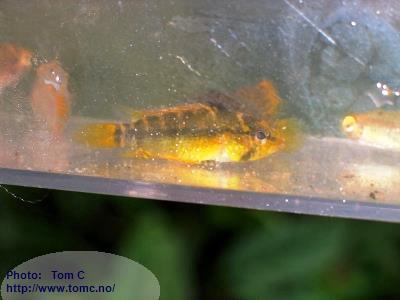
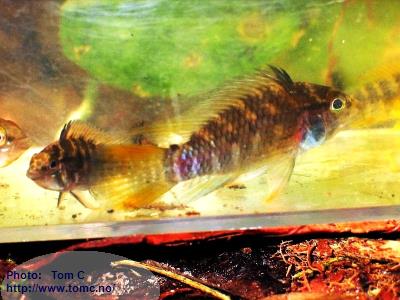
The dark appearance and the blackish color on the gill cover have given this fish its local name;
Apistogramma "Negra (black)".
According to Mike (Wise), it looks to be the
A. sp. "Albertini" form of
A. cf. eunotus "Schwanzstreifen/Tail-stripes".
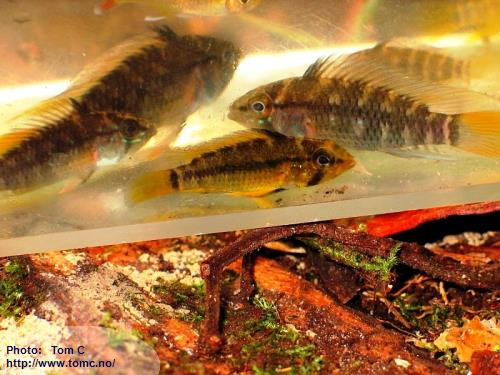
Strange enough, not all the males
showed a distinct pattern of rows of
spots in the caudal fin:
The water:
pH: 5,03
Conductivity: 13 µSiemens/cm
T: 30,1 °C
(at the end of the dry season)
The walk back was very, very hot, and after a while we were very warm, very thirsty and very tired.
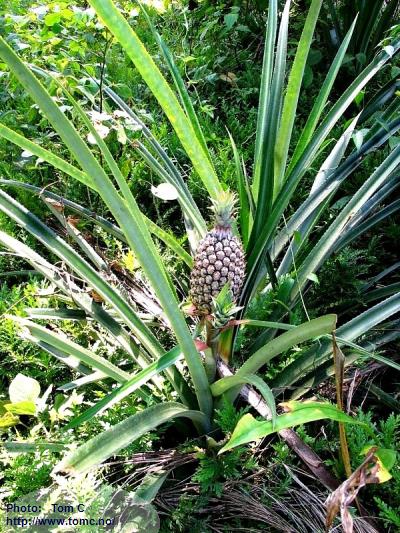
We found a wild pineapple, and our local guide
prepared it for us, with his machete, on a leaf......
that helped a lot.
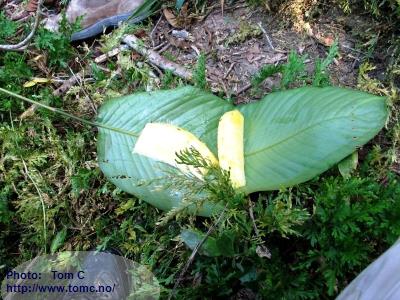
Then we sat in the boat for three and a half hours before we again were in Pebas.
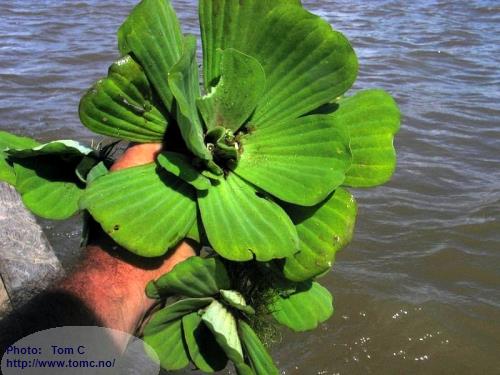
Huge
Pistia stratiotes are floating
in the Río Amazonas:
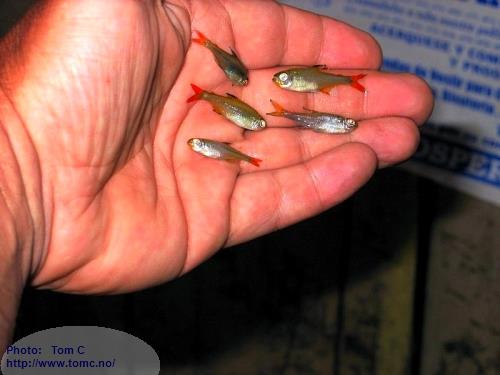
Back in Pebas, we found that some
of the nice tetras we collected in the
Río Orosa, didn't make it....
but the apistos were fine.
Fortunately, we arrived in Pebas just before a veritable tropical storm swept over the area.
It was raining outside the hotel......
....... and inside
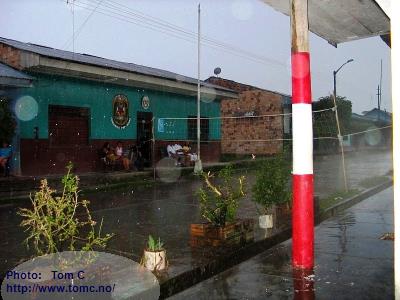
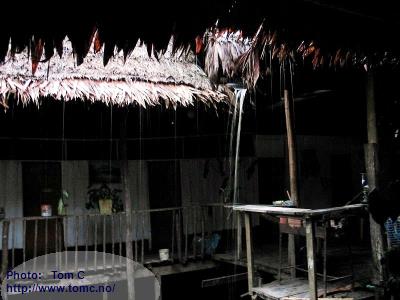
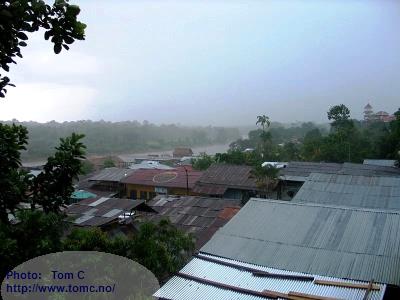
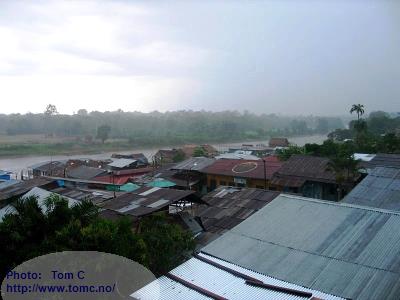
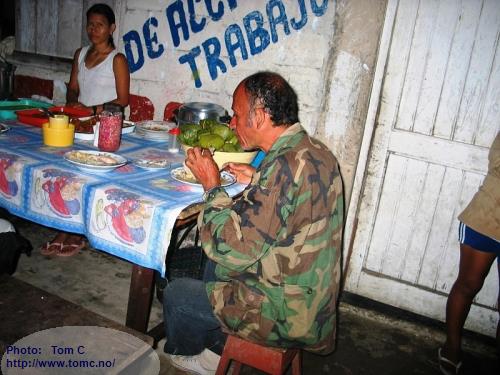
We had supper outside, under a canopy;
jungle soup with chicken.
Again we planned to start early the next
day, so no night clubs for these guys......
Río Shishita
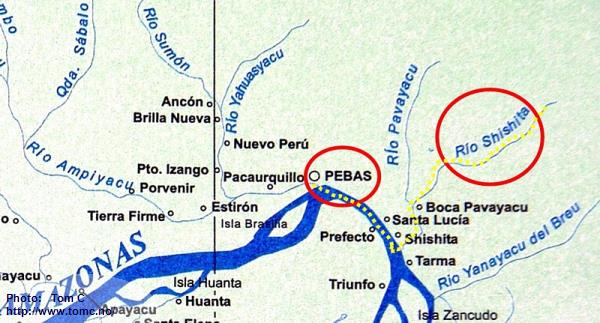
The yellow spots
show where we
were heading
.....to Río Shishita.
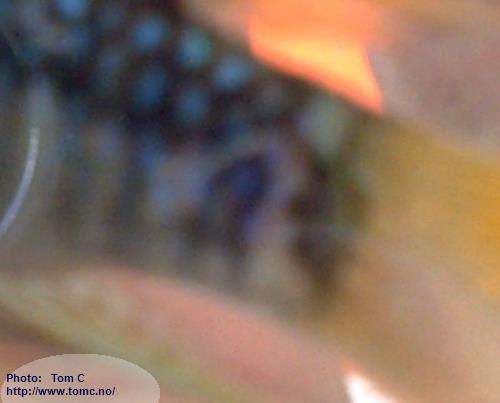
We had seen photos of an
Apistogramma
with strange split bars and
A. sp. "Pebas"-like colors.
We wanted to find it, collect it and see it alive....
At 07:00 we were at Pebas "harbor", ready to leave, in the same boat as the day before.
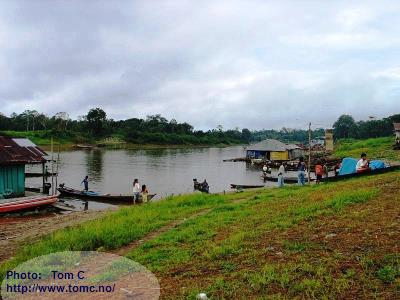
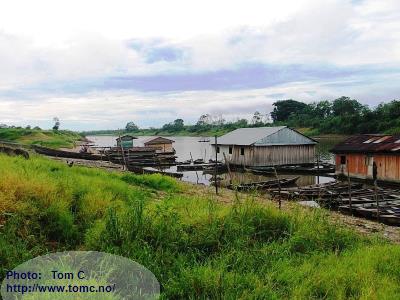
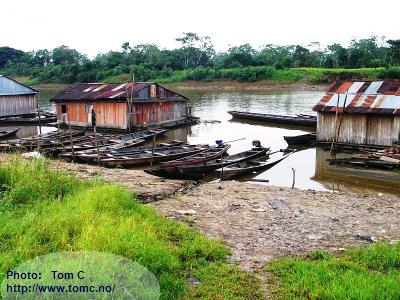
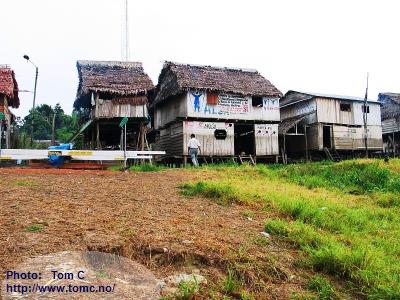
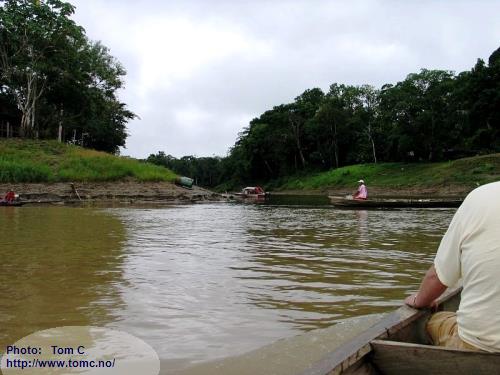
After more than one hour from Pebas,
south-east down-stream the
Río Amazonas, we reached the mouth
of Río Shishita:
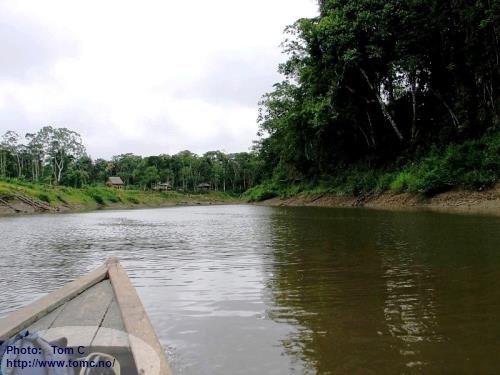
We entered the Río Shishita,
and went upstream.
Going upstream the Río Shishita:
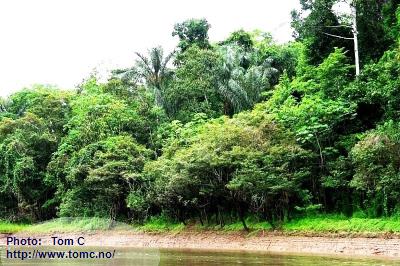
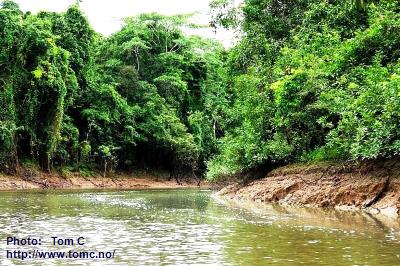
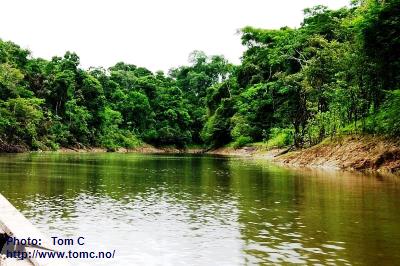
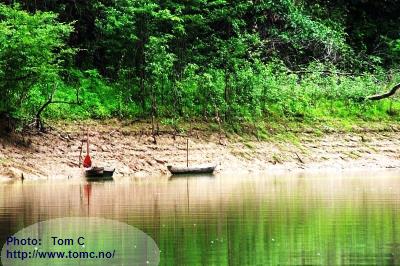
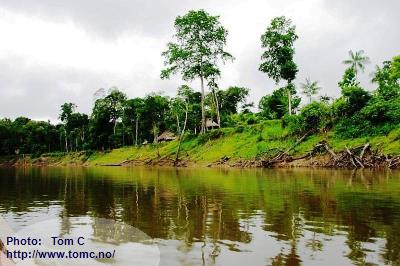
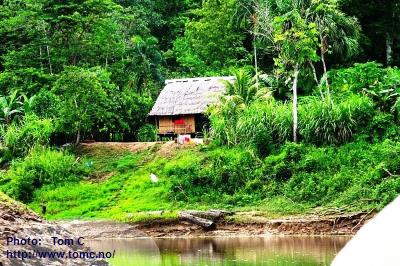
....and going upstream the Río Shishita......
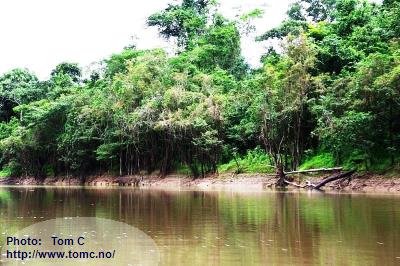
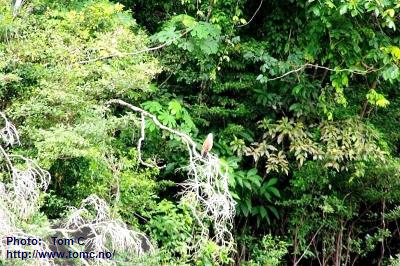
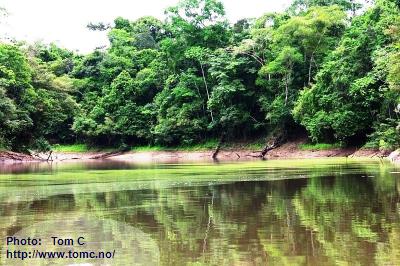
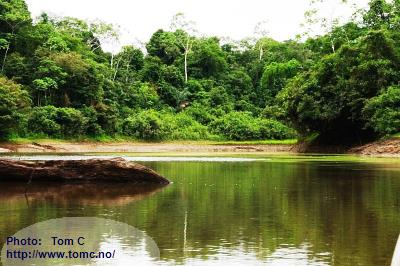
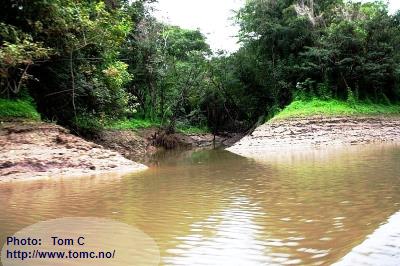
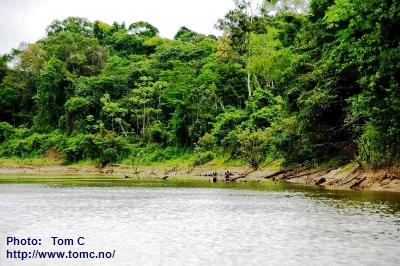
....and going upstream on the Río Shishita...... for several hours.....
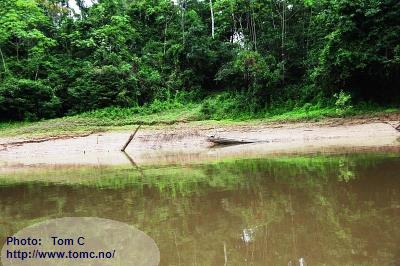
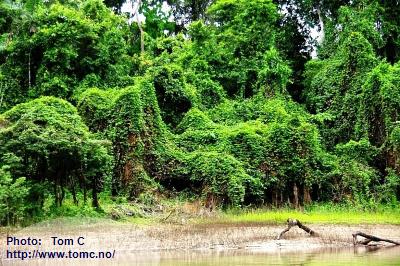
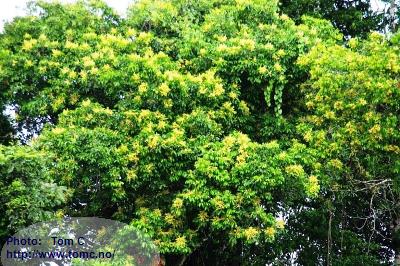
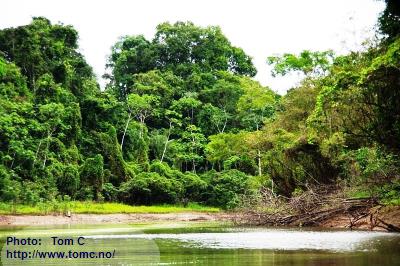
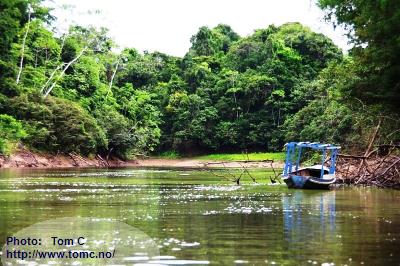
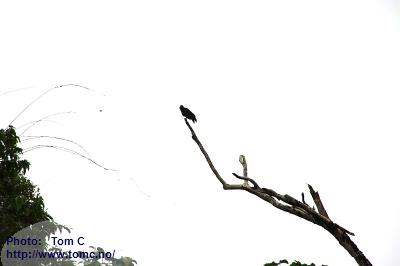
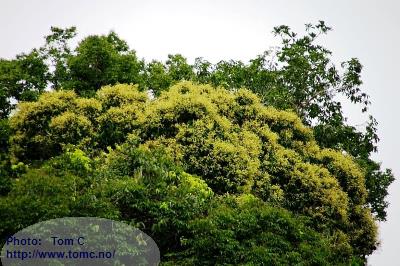
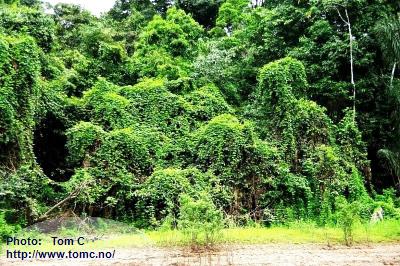
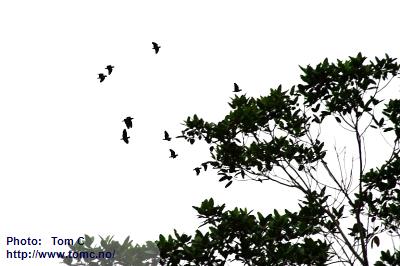
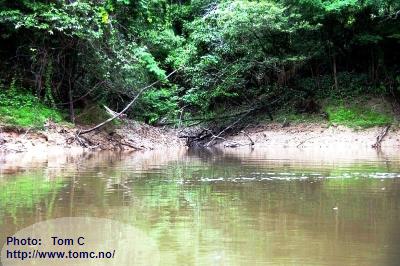
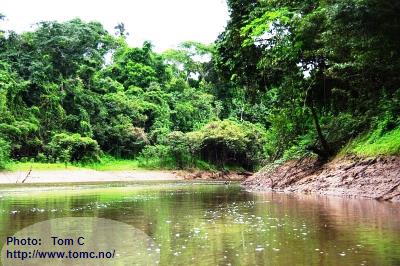
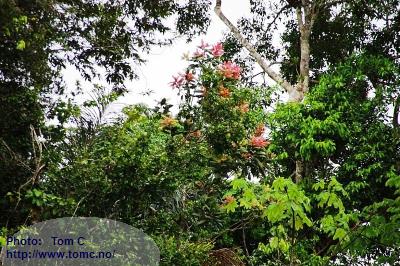
.... bend ..... after bend ..... after bend ......
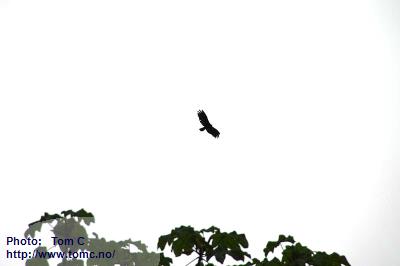
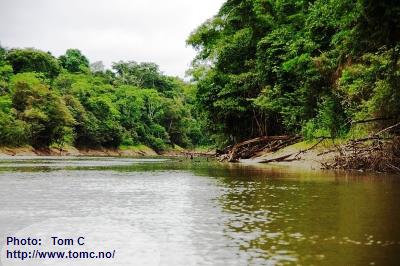
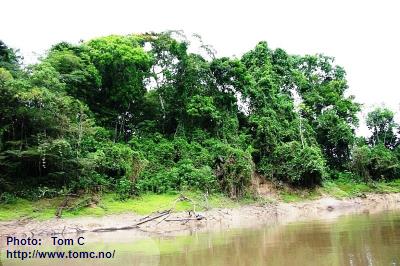
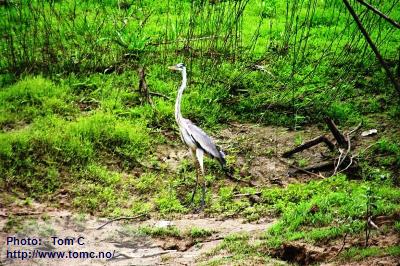
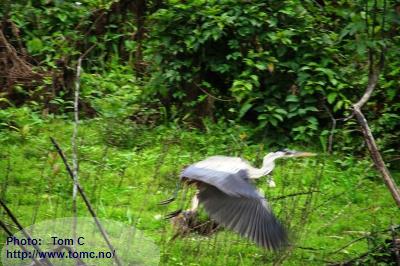
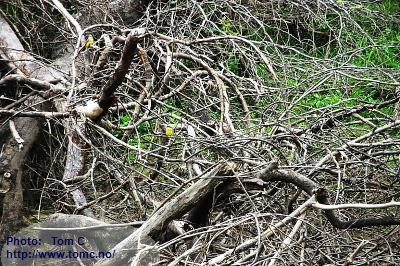
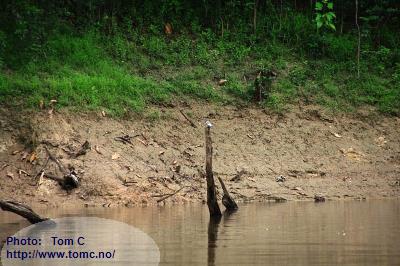
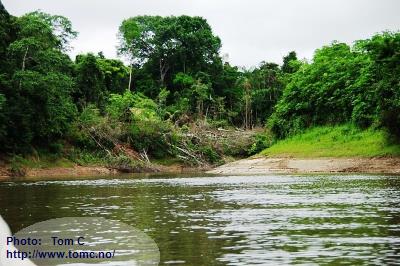
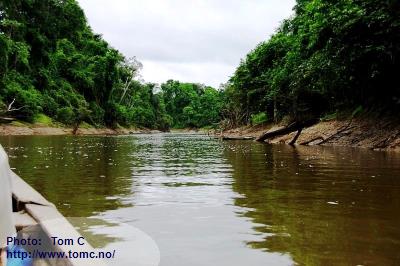
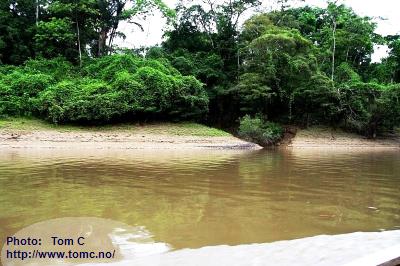
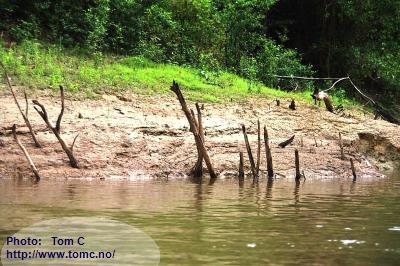
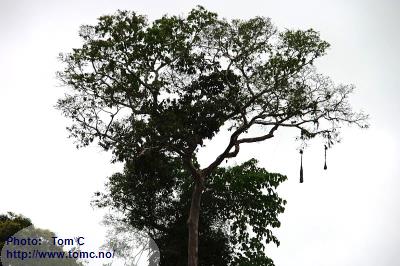
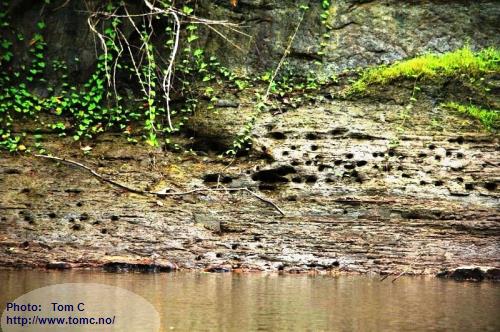
Nesting caves for swallows in the
low water season, for catfish
when the water is high.
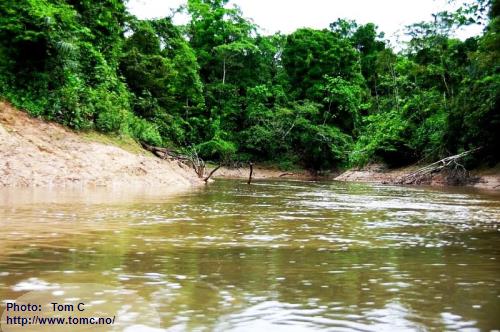
We passed the mouth of
Río Pavayacu, entering
the Río Shishita.
15 minutes upstream this river one can find Río Curutu, with it's
recognizable
Apistogramma
bitaeniata "Curutu".
As the water was extremely low, it became more and more difficult to maneuver the boat between all the trees and
branches in the river.
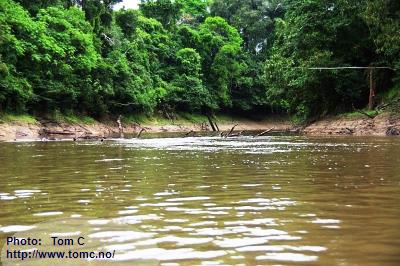
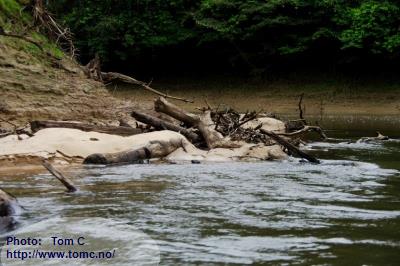
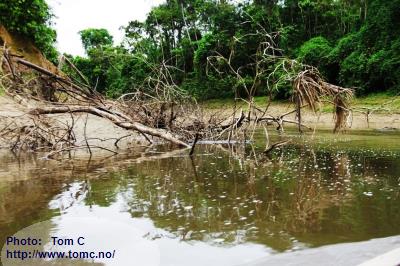
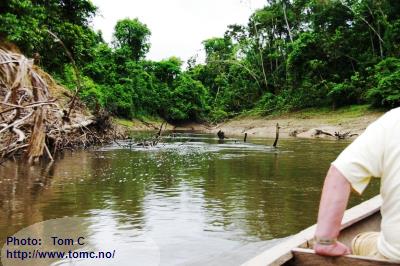
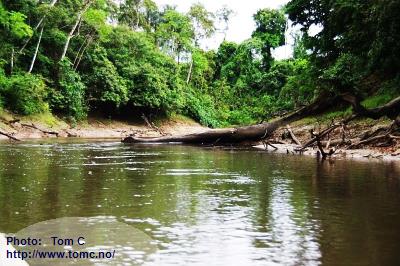
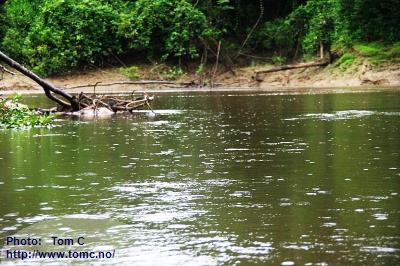
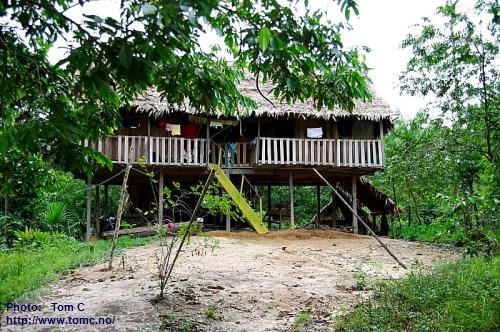
At last we could see the house where
we were going to spend the night.
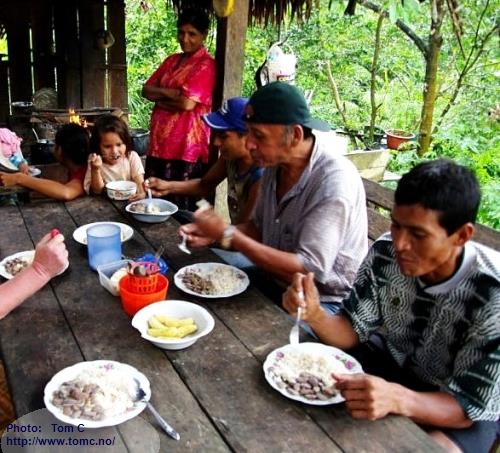
and we could eat with the family
living there.
Rice, beans and bananas.
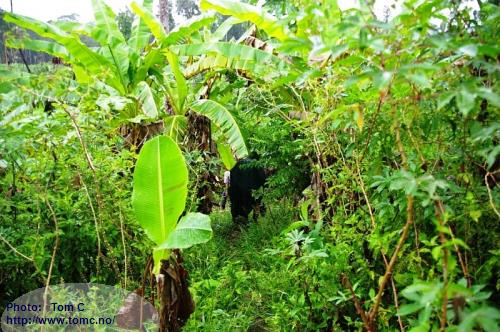
and then: out in the jungle.
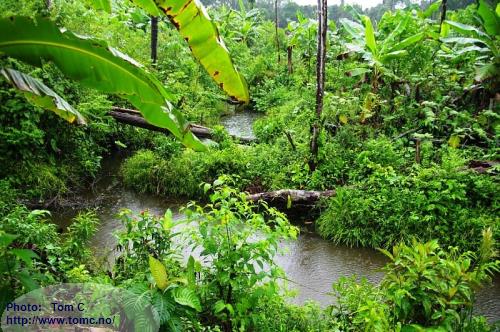
After a while, in heavy rain, we were
looking at this:
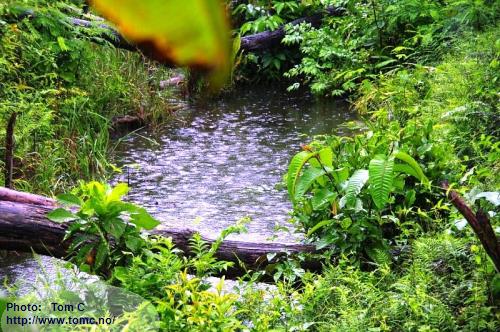
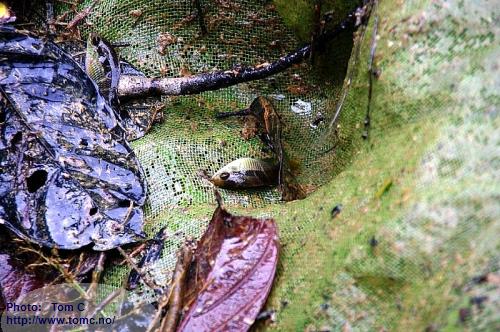
The first catch didn't look very
promising, a couple of
Laetacara thayeri(?)
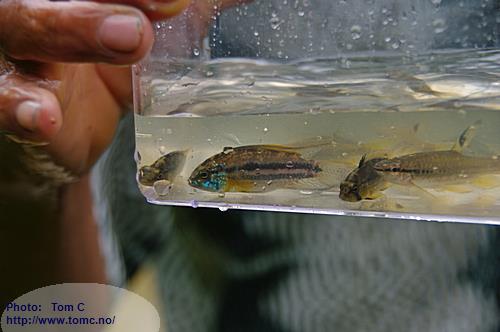
but under the leaves in
the net:
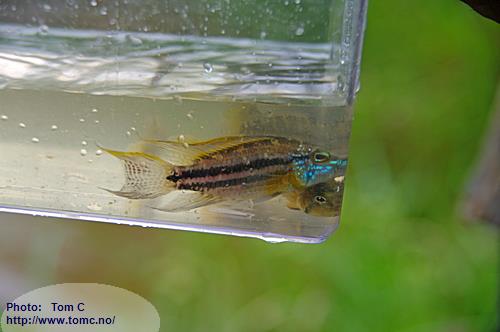 Apistogramma bitaeniata
Apistogramma bitaeniatawith yellow chest and
shining blue color on the
gill cover and in the face:
a color morph usually
collected in Río Curutu.
(
A. bitaeniata "Curutu")
(To locate the Río Curutu:
see above).
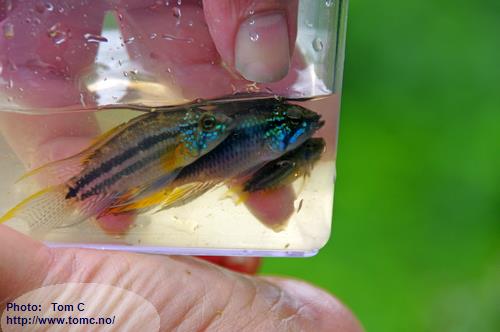
There were also some
Apistogramma agassizii there:
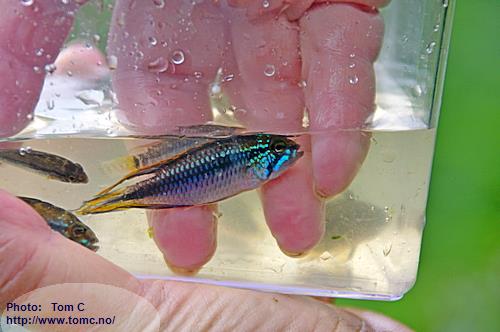
With its reddish caudal fin and overall
blue color, it is quite similar to the
color form locally called
Apistogramma agassizii
"Red-blue",
which I collected in
the Río Nanay in 2005.
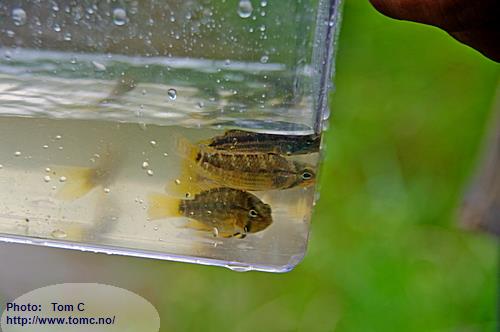
Amazingly, there were also
a third
Apistogramma - species in the net.
Some
A. cf. -
eunotus - like
females.
Could we find males?
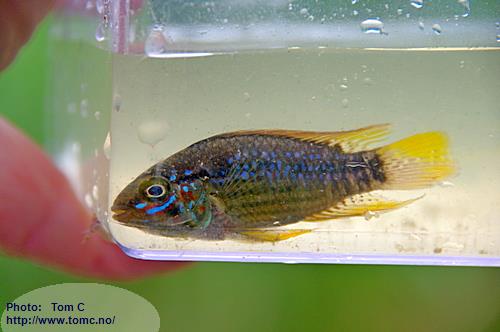
Yes, we could!
Outstandingly split bars!
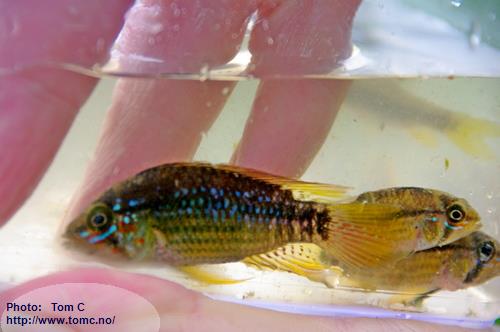
This is a new member of
the
A.- eunotus-complex
and the
A.-eunotus-subcomplex
within this complex.
Apistogramma cf. eunotus
"Shishita"
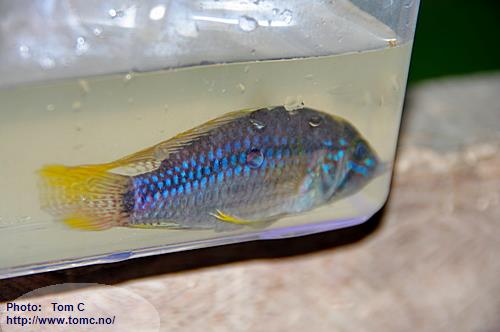
It shows body colors very similar to
Apistogramma sp. "Pebas".
Could this be the "missing link"
connecting the
A.-eunotus-subcomplex
and the
A. -sp. Pebas-subcomplex?
The water: pH: 5,64 Conductivity: 37 µSiemens/cm T: 26,1 °C
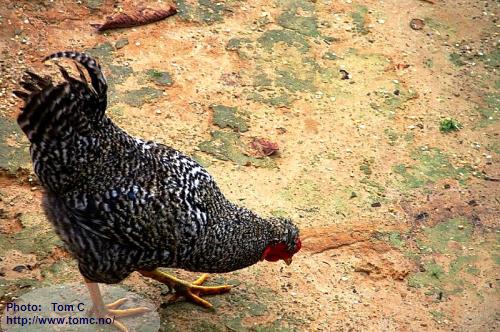
Not all the animals in the
area are exotic....
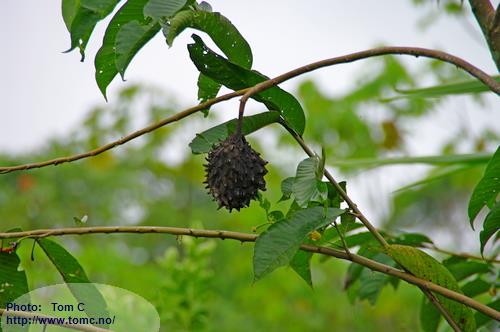
Everywhere there are
trees with flowers or fruits:
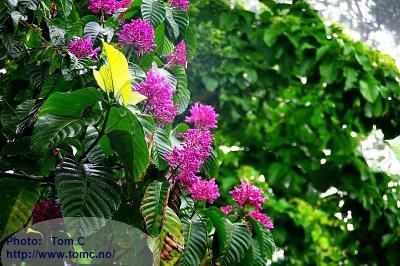
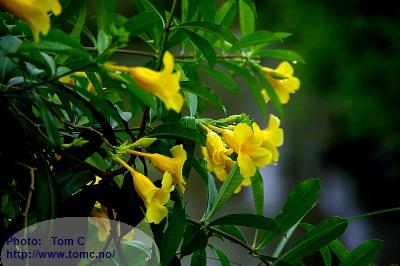
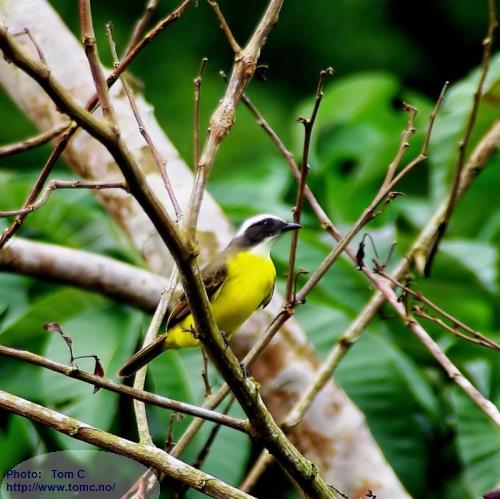
These beautiful birds are
seen in small numbers all over the area.
Latin name:
Myiozetetes similis
English name:
Social Flycatcher.
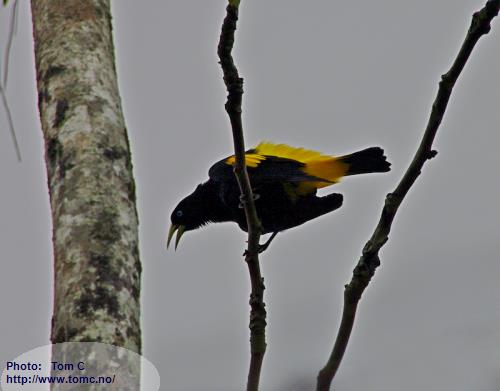
These very lively birds
make nests resembling
the nests of the weaver
birds in Africa.
Latin name:
Casicus cela
English name:
Yellow-rumped cacique
.
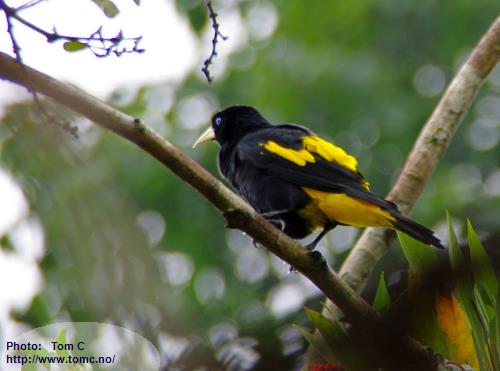
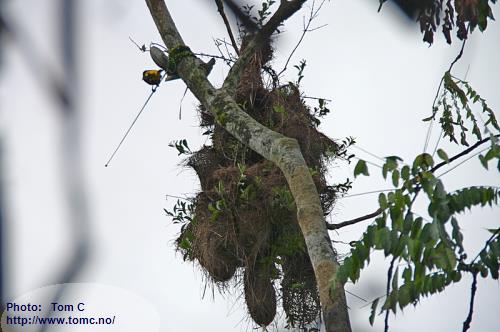
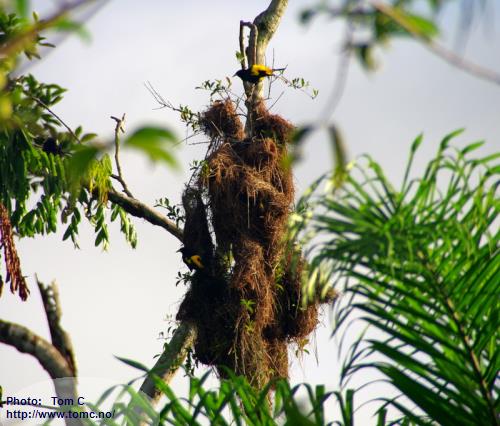
In the house, our hosts kept a skull of the South American Tapir,
Tapirus terrestris
The South American Tapir can attain a body length of 1.8 to 2.5 m (6 to 8 ft.) and 270 kg (595 lbs.) in weight. It stands somewhere between 77 to 108 cm (2.5 to 3.5 feet) at the shoulder.
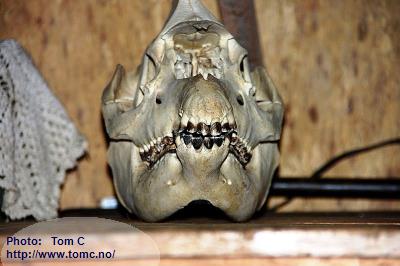
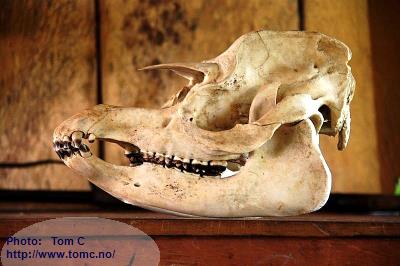
It was a beautiful afternoon:
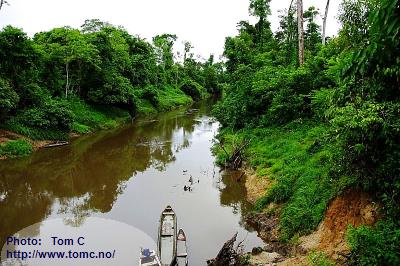
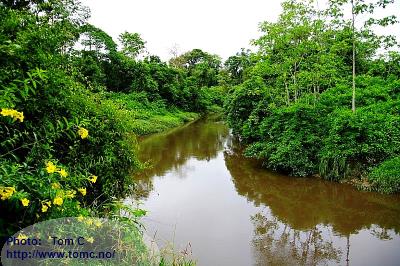
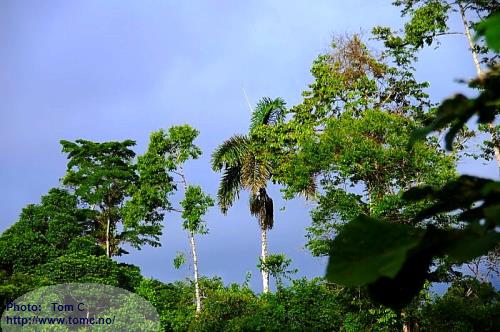
but soon the sky darkened again.
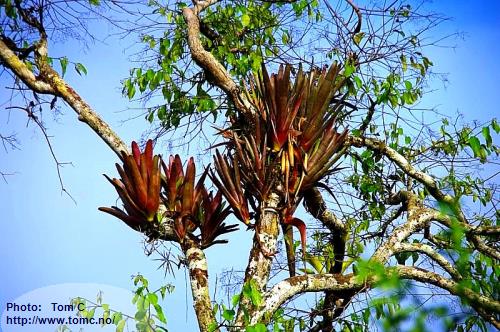
The huge epiphytic plants high up
in the trees were waiting for
their daily shower.
The rain was coming back, and it darkened........
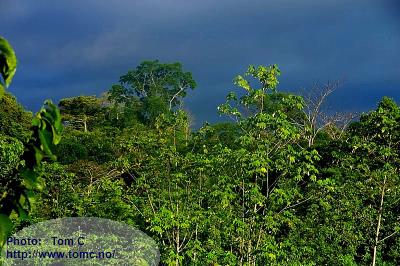
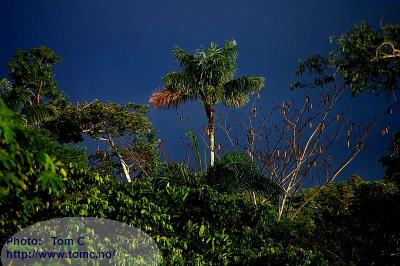
A lot of rain during the night, but next morning was beautiful!
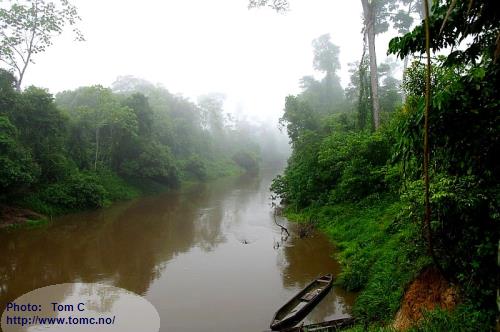
Río Shishita at 05:50 a.m.
At breakfast we had company of a parrot kept as a pet.
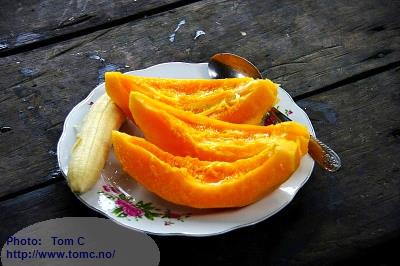
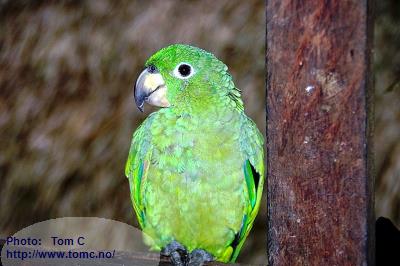
We used our boat and went further up the river, and entered the jungle at the other side of the river.
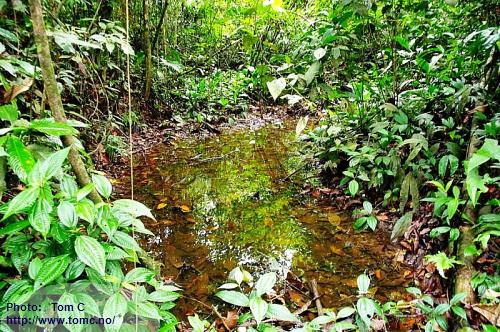
We looked at this biotope:
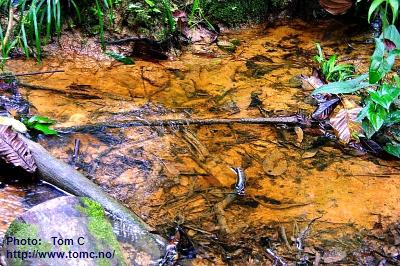
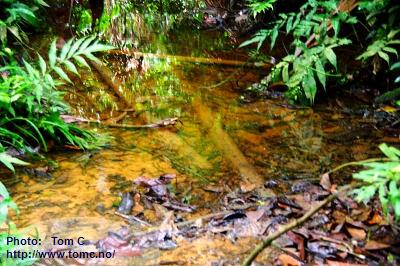
The surroundings:
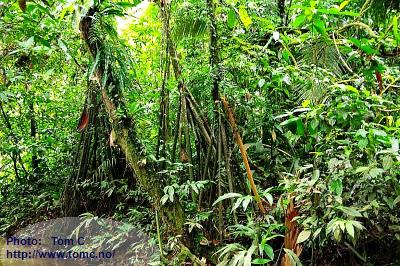
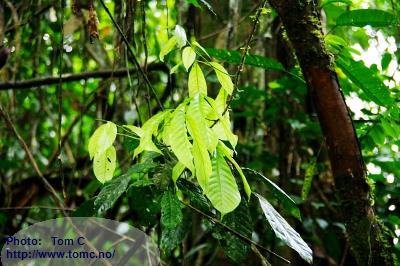
<
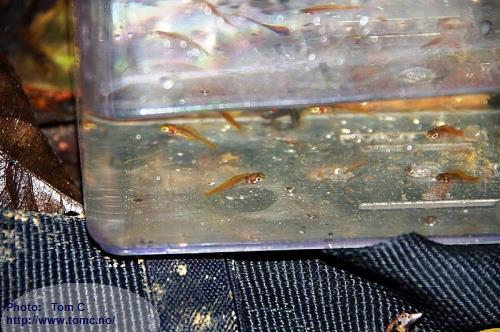
We found what we
were looking for:
The tiny Characin locally called
"Picaflor" or "Colibri Red".
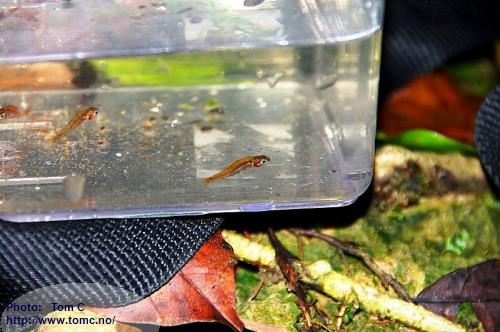 The water:
pH: 5,32
The water:
pH: 5,32
Conductivity: 21 µSiemens/cm
T: 24,0 °C
(after heavy rain,
at the end of the dry season).
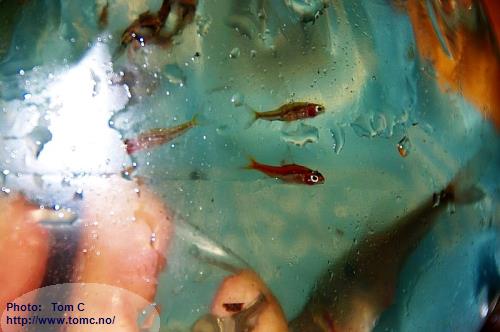
Some of them showed
more red colors than
others: Males?
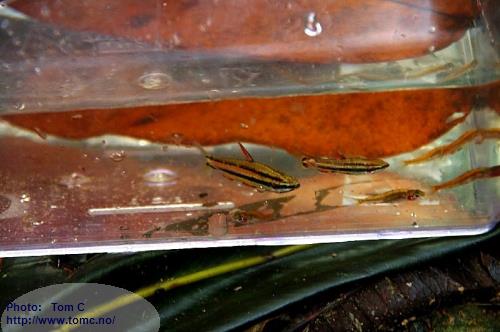
They were collected together with
Nannostomus (cf.)
marginatus.
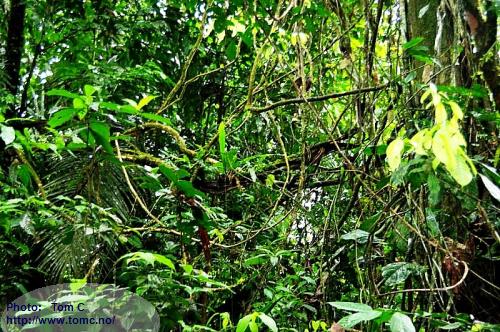
Quite dense vegetation in
this biotope:
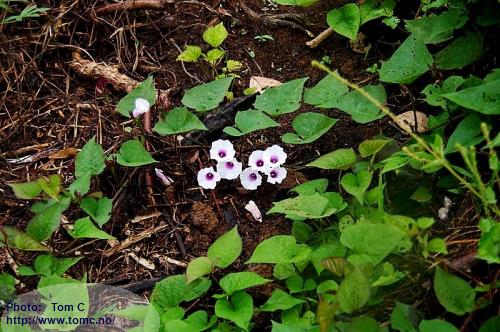
Ground living plants
flower too:
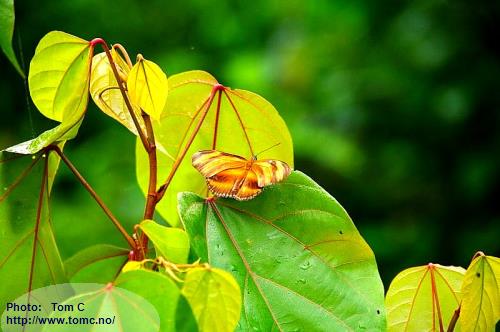
and unknown species of
butterflies everywhere:
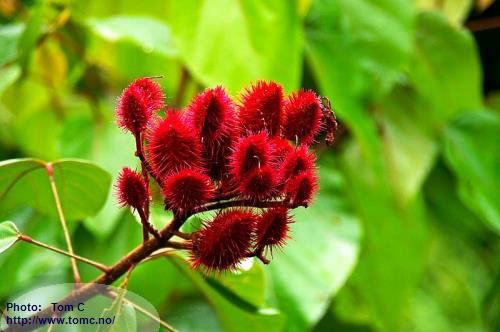
This fruit, Achiote (
Bixa orellana),
is well known to the locals.
It is used to paint their faces or bodies.
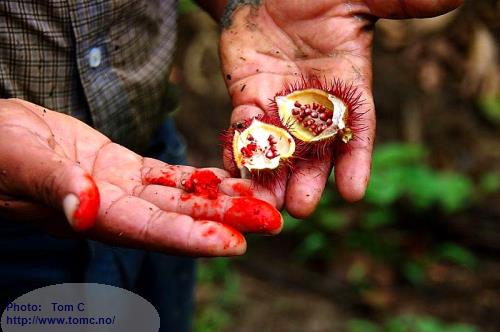
It gives an intense red
color to the skin......
and it was not easily
removed when first applied!
These reminds me of some kind of
Strelitza spp.
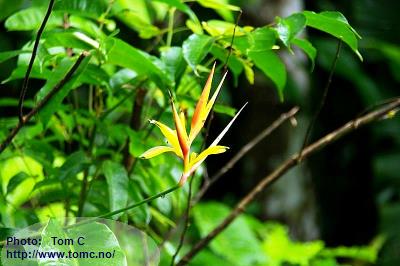
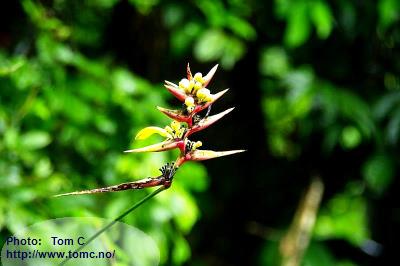
Lots of other creatures everywhere.....
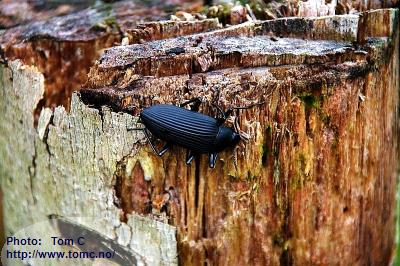
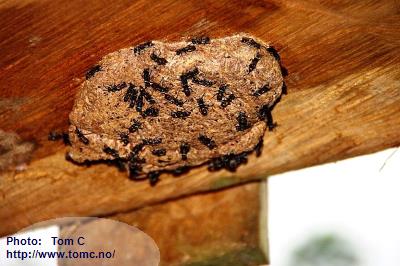
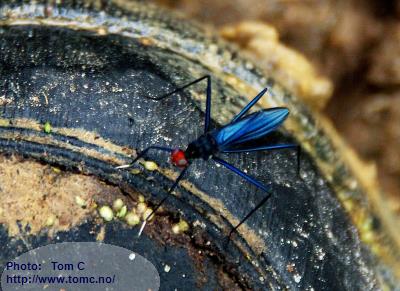
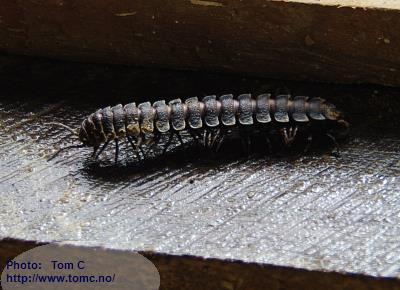
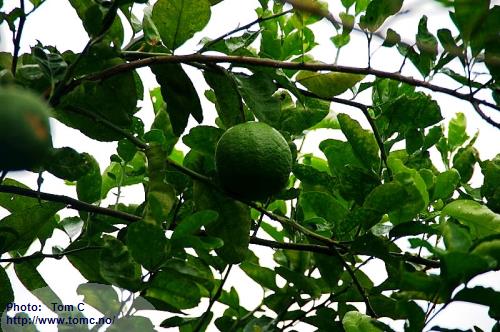
Wild lime (
Citrus latifolia) tastes good when in the jungle!
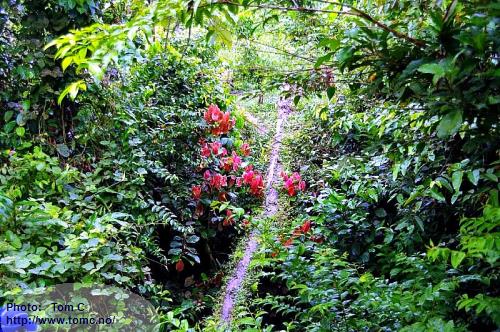
This overgrown fallen tree
is a bridge over a small
stream.
We climbed down to where
the water, and hopefully
some fish, were....
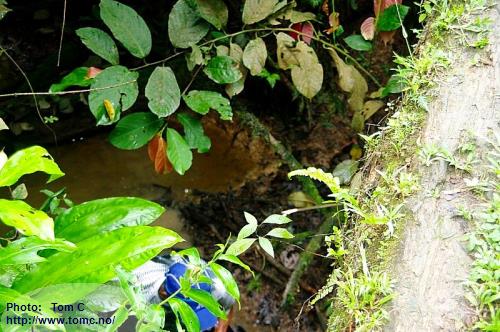
It was difficult to use
the net here:
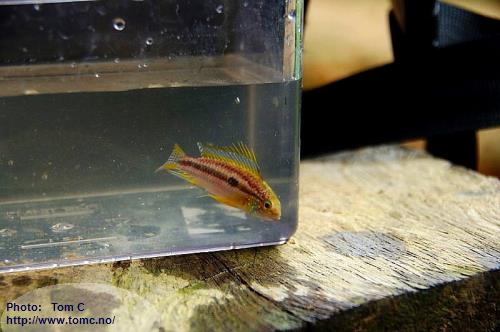
but we found fish:
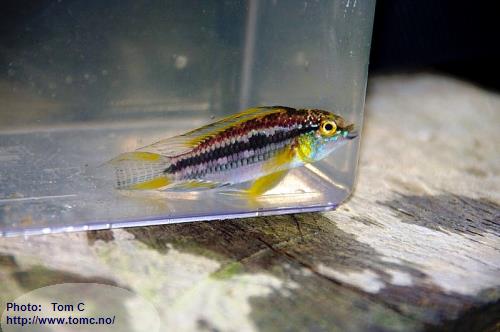 Apistogramma bitaeniata "Shishita"
Apistogramma bitaeniata "Shishita"
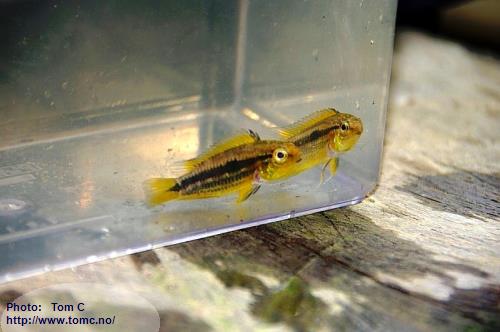
and females.
The water:
pH: 5,01
Conductivity: 27 µSiemens/cm
T: 25,7 °C
(at the end of the dry season).
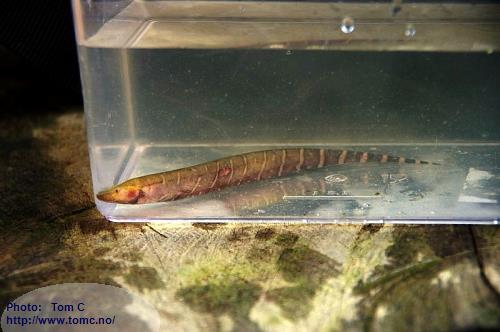
and as usual, when collecting in very small streams with shallow
water: Knifefish.
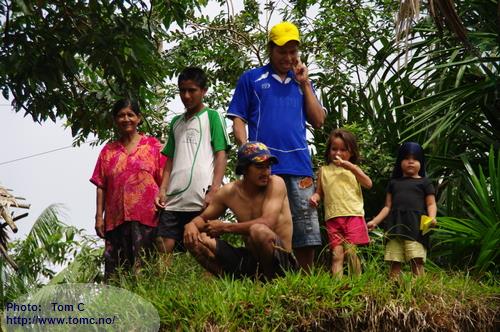
Then we left our hosts,
and went downstream
the Río Shishita.
After all the rain, the water was much higher, and we had no problems with trees and branches in the river.
After a few hours, we were out on the Río Amazonas again.

During the low-water season, local
people grow rice at the shores.
When the water rise, these shores are
flooded, and at the same time
fertilized with new mud.
Some places they can harvest the rice
twice, before the water rises
again.
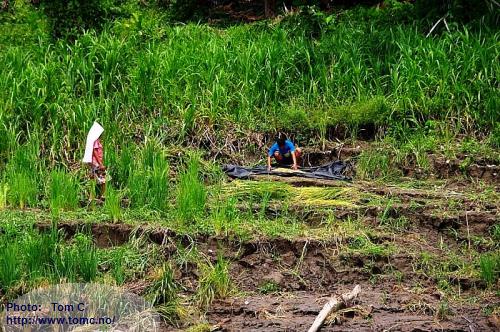
At this time, at the end of
the low-water season,
people are busy harvesting
the rice.
One or two more high-water seasons, and the erosion will probably mean the end of these trees:
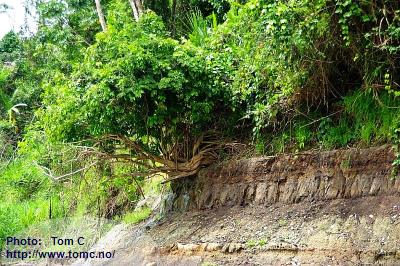
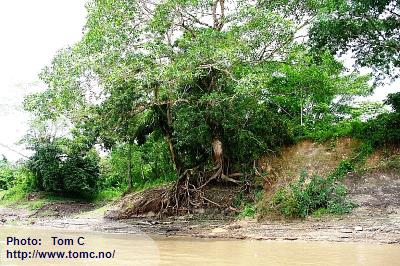
Everywhere in the Río Amazonas, we see Water hyacinths,
Eichhornia crassipes, floating by.
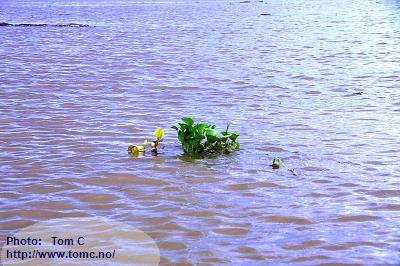
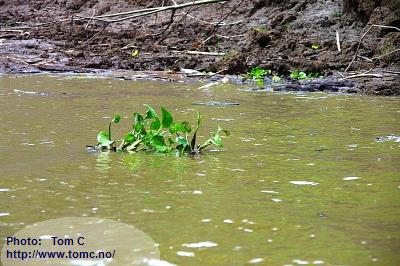
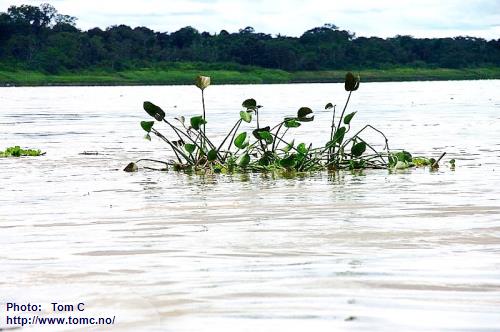
Sometimes several of them
float together, on their long
journey towards the
Atlantic ocean.
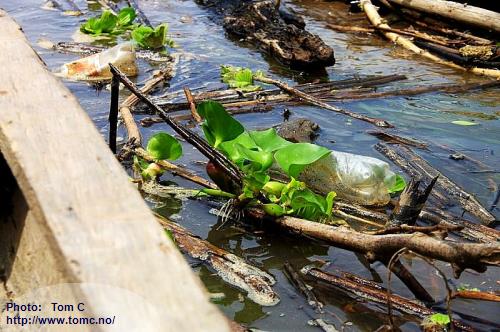
Unfortunately, this habitat
of the Water hyacinth
looks more and more like
this; filled with garbage.
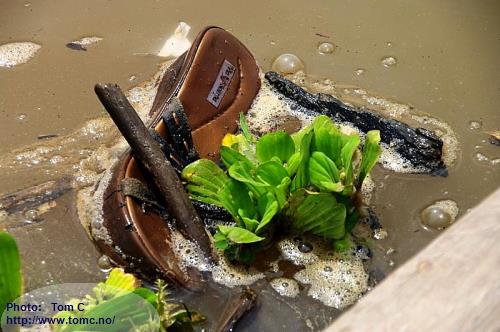
and the same is the case
with the habitat of
Pistia stratiotes floating
in the Río Amazonas.
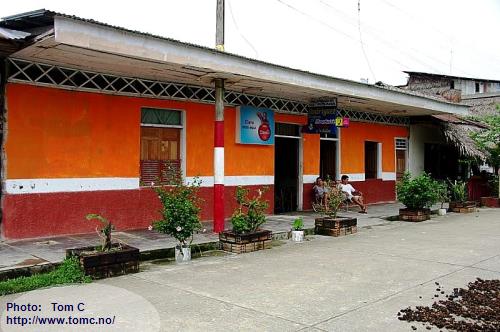
Finally, we were back at
"our" hotel in Pebas:
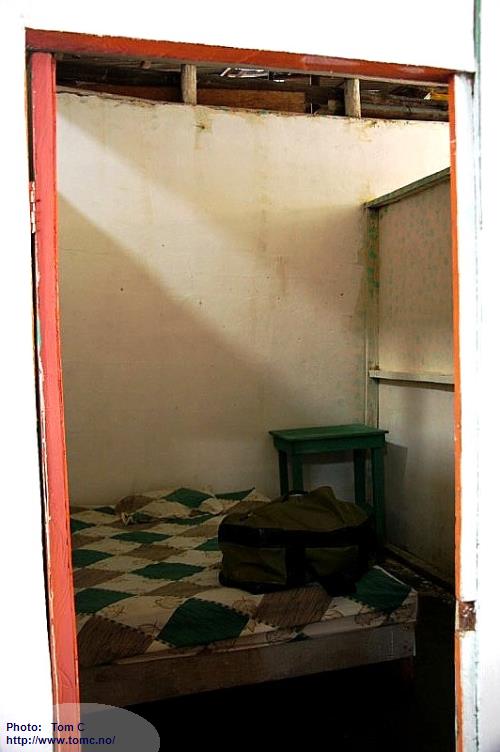
and I noticed that I had got a "new" blanket on my bed :-)
Early the next day we went back to Iquitos again, with a "Rapido".
And after resting a bit, we where preparing for the next expedition....
Thanks to my very good friends, Francisco and Sergio,
who helped us with everything!